



What is Task Based Learning?
Task Based Learning (TBL) is such a method of teaching language, where the main focus is done on the learner, his or her activity. This method puts the learner into the real-life situation where he (she) must solve the task using communication. So that we use language as a tool for completing the task.
 The Theme of the Project: The Task Based Learning method as a contemporary approach in teaching English (in teaching such topics as "Food. Shopping" and "Giving Directions")
The Theme of the Project: The Task Based Learning method as a contemporary approach in teaching English (in teaching such topics as "Food. Shopping" and "Giving Directions")- to study the peculiarities of TBL method for the development of the communicative skills at the lessons of English;
- to increase learner activity;
- to encourage learner to use English language as a tool while communicating;
- to create the atmosphere of success for each learner.
 Tasks (general and specific according to the communicative topics):
Tasks (general and specific according to the communicative topics):
- to develop the communicative skills;
- to create the conditions for socialization of the person in the modern society;
- to increase the vocabulary in the above mentioned topics;
- to teach how to make a list for shopping, how to ask for something in the shop, how to ask or give the direction to any place in the city
- to enable learners to communicate in the real-life situations
 Anticipated results (general and specific according to the communicative topics):
Anticipated results (general and specific according to the communicative topics):
- positive relationship to English language as a tool for communication;
- respect to the English-speaking country, its customs and traditions;
- development of the communicative culture in the modern society;
- development of intellectual, language and research skills;
- the learners will be able to do shopping;
- the learners will be able to ask for or give the direction for any place.
 Age group:
Age group:
learners of the 6 - 7th forms
 Stages of work on the Project:
Stages of work on the Project:
1. The preparatory stage: the analysis of the information resources according to the theme of the Project.
2. The organization stage: studying of peculiarities of TBL method in the frame of some topics.
3. The practical stage: practical usage of TBL method at the lessons of the 6 - 7th forms while studying the topics "Food. Shopping" and "Giving directions". Regular monitoring of the students' knowledge. Presentation of positive results.
4. The correcting stage: analysis and correction of the process.
5. Summarizing of the pedagogical experiences.
 The information resources:
The information resources:
- Task Based Language Learning. /author Peter Robinson.
- Ellis, Rod (2003). Task-based Language Learning and Teaching. Oxford, New York: Oxford Applied Linguistics. ISBN 0-19-442159-7.
- Frost, Richard. "A Task-based Approach". British Council Teaching English. Retrieved September 21, 2015.
- Leaver, Betty Lou; Willis, Jane Rosemary (2004). Task-Based Instruction In Foreign Language Education: Practices and Programs. Georgetown University Press.
- Harmer, Jeremy (2001). The Practice of English Language Teaching (3rd ed.). Essex: Pearson Education.
- Harmer, Jeremy (2007). How to Teach English. Essex: Pearson Education.
- Nunan, David (1989). Designing Tasks for the Communicative Classroom. Cambridge: Cambridge University Press.
- Nunan, David (2004). Task Based Language Teaching. Cambridge: Cambridge University Press.
- Prabhu, N.S. (1987). Second Language Pedagogy. Oxford: Oxford University Press.
- http://www.italki.com/article/327/task-based-language-learning#.VnWQ9raLTUK
Brief description of TBL method:
As any method of teaching TBL has both advantages and disadvantages.
As for advantages, we can mention that:
- such method allows to change the focus of the lesson. So the main focus is laid on the learner not teacher. Learner must solve the task using his (her) knowledge, teacher can just monitor the process.
- such method focuses on real-life communication. Thus we give such tasks that can be met in life: to order food in a restaurant, to see a doctor, to share experience, etc. To cut in short, from abstract knowledge to real world application.
- it gives the understanding of a language as a tool not a goal of learning.
As for disadvantages, it can be said that:
- this method is focused more on fluency than accuracy.
- it can hardly be applied to the young learners. So this method is mostly used with adults who are highly motivated to improve their language skills.
- it can hardly be applied in our schools in a proper way because of strict curriculum, text books, etc.
But we can use it as an element of the lesson.
TBL has its structure that must be followed.
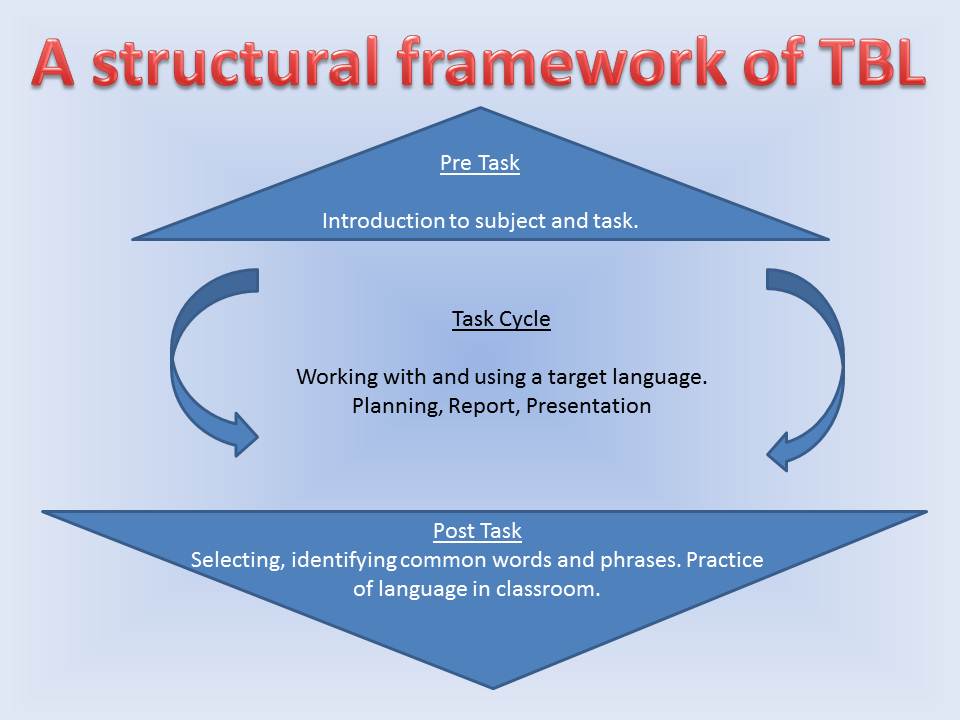
The Pre - Task must supply words, phrases, ideas to support a learner while doing the task.
It can be
- a video clip
- photos
- cards
- webpages
- pictures
Task must facilitate the process where each learner can activate his or her own knowledge, experience, etc.
Learners begin by carrying out a communication task, using whatever language they already have, in pairs or groups. A task is a goal-oriented activity in which learners achieve a real outcome. According to Willis, (1996, pp 26-28), there are six main types of task:
1. Listing
2. Ordering and sorting
3. Comparing
4. Problem solving
5. Sharing personal experiences
6. Creative tasks
The Post - Task is very important. During this stage
- mistakes are corrected;
- some vocabulary or grammar phenomena are picked up and focused on;
- learners go through the task once more imitating the real - life situation before the whole class.
To fully understand what makes up the heart and soul of a Task Based language learning lesson, a framework of its characteristics needs to be outlined. D. Nusan identified five characteristics of a TBLL lesson, they are:
- An emphasis on learning to communicate through interaction in the target language.
- The introduction of authentic texts (teaching materials) into the learning situation.
- The provision of opportunities for learners to focus not only on language, but also on the learning process itself.
- An enhancement of the learner's own personal experience as important contributing elements to classroom learning.
- An attempt to link classroom language with language activation outside the classroom.
 And now let's see how this method can be used at the lesson.
And now let's see how this method can be used at the lesson.
The topic: Around the city. Giving directions.
Pre - Task Stage
Learners are shown the pictures of different buildings. So that they have to remember the names of these buildings and continue the list by adding more information.
During this stage learners activate previous knowledge.

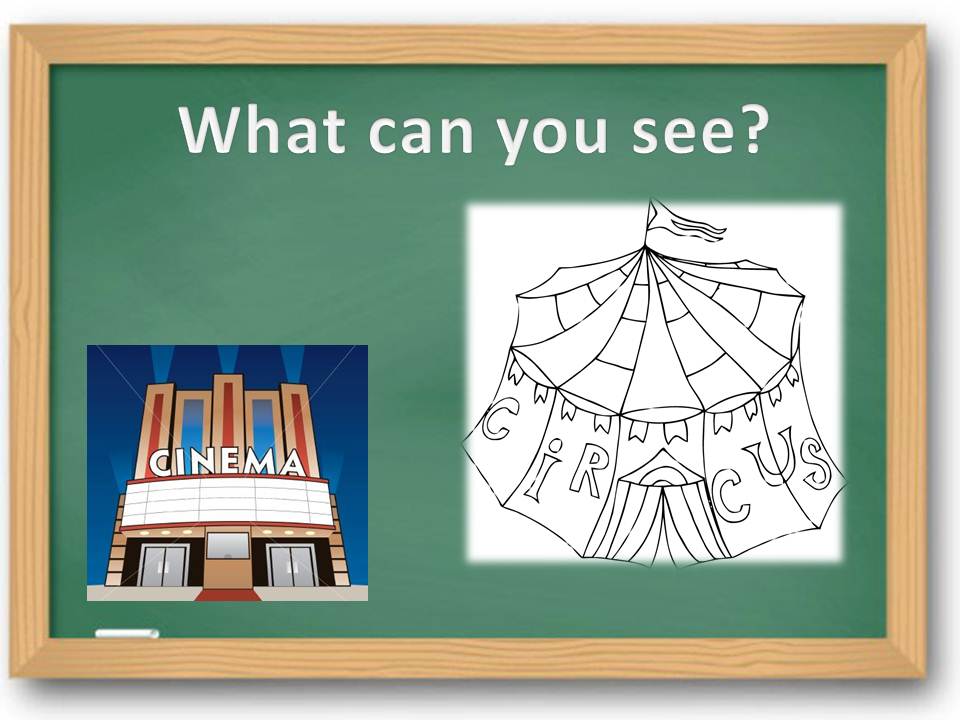

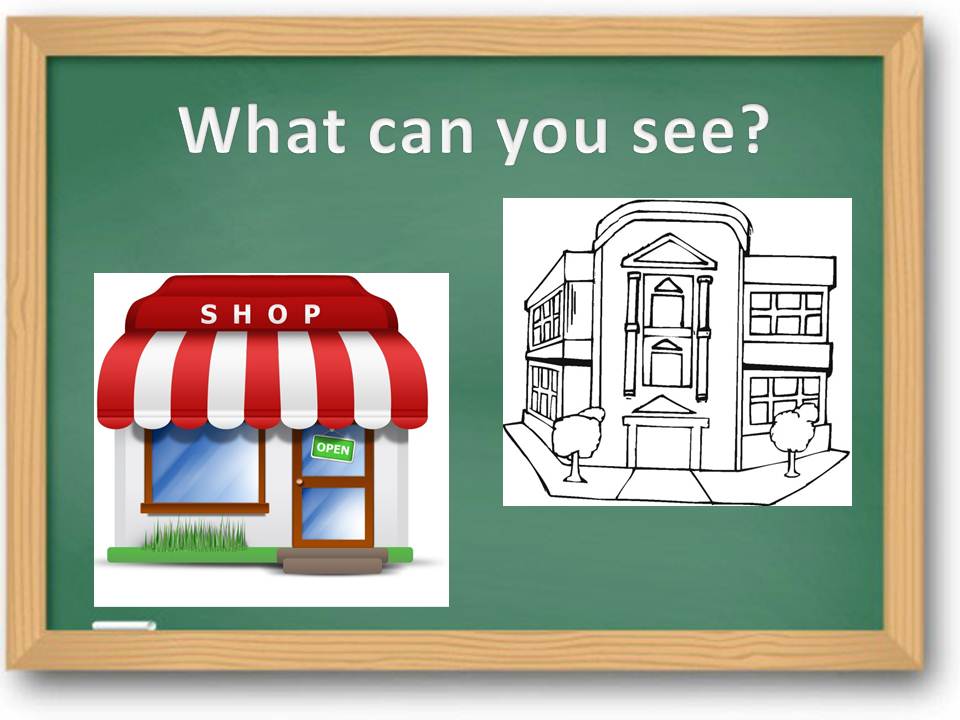


Task Stage
During this stage learners are divided into groups. Each group receives the task. Communicating and discussing they solve this task.
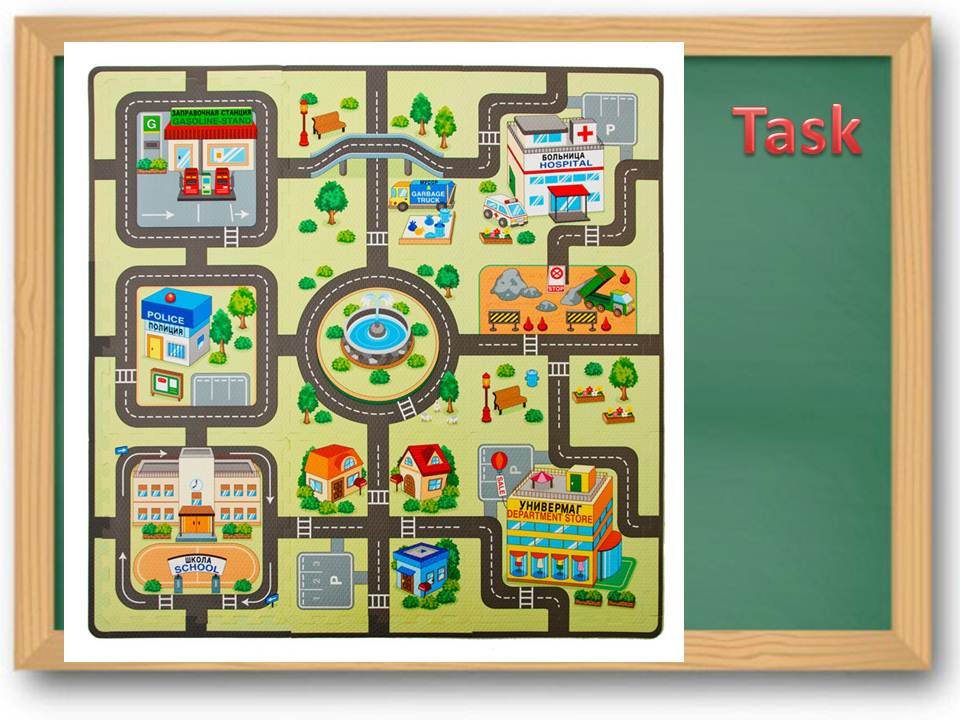
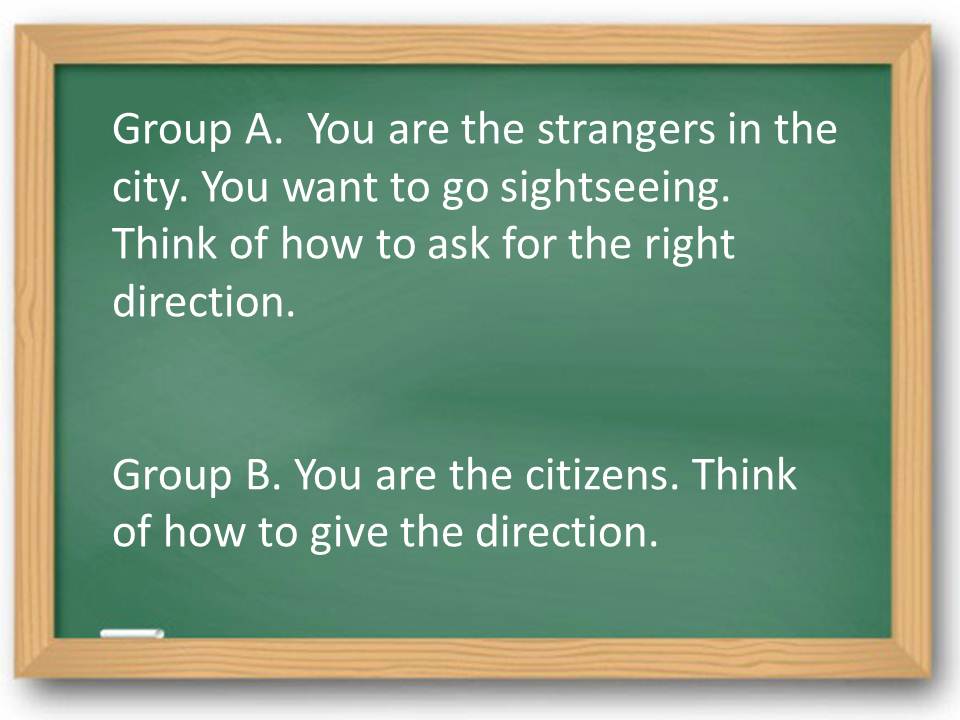
While communicating learners make a list of questions and instructions.
Then they represent their work. It is discussed, mistakes must be corrected and analysed.
Post - Task Stage
After presentation learners are asked to make pairs and go through the task once more using the phrases written while doing Task. One learner is a stranger, another is a citizen. So that they can use gained knowledge in a real-life situation.
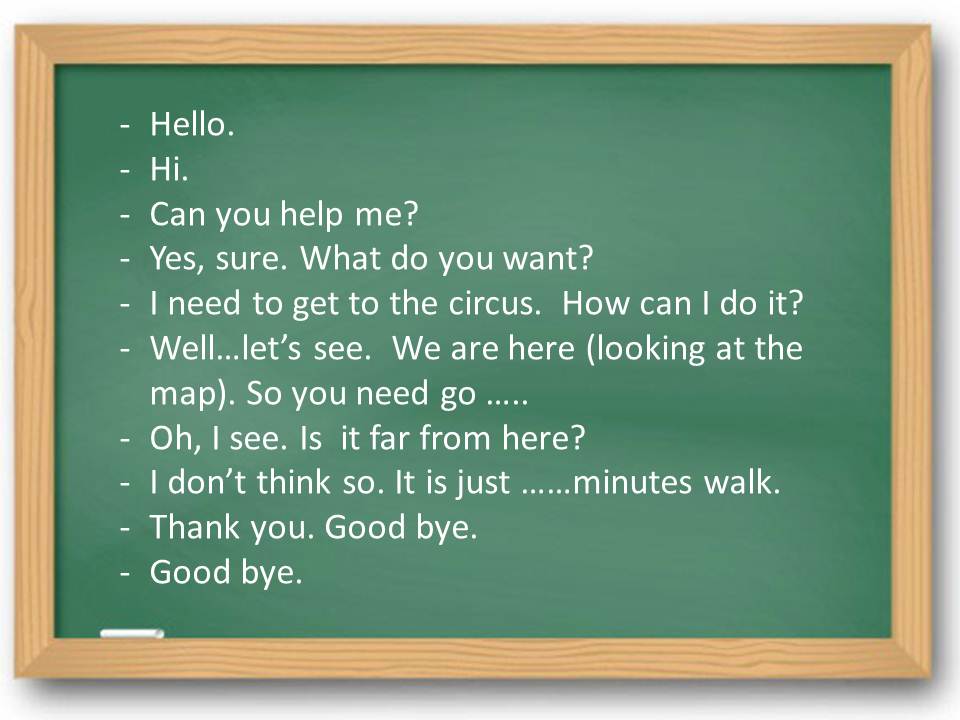
 The topic "Around the city. Giving Directions"
The topic "Around the city. Giving Directions"
Pre - Task Stage
Learners are shown the pictures.
- What do you see at the pictures?
- Where is the man? Can you name the city?
- Why do you think so?
- What are they doing?
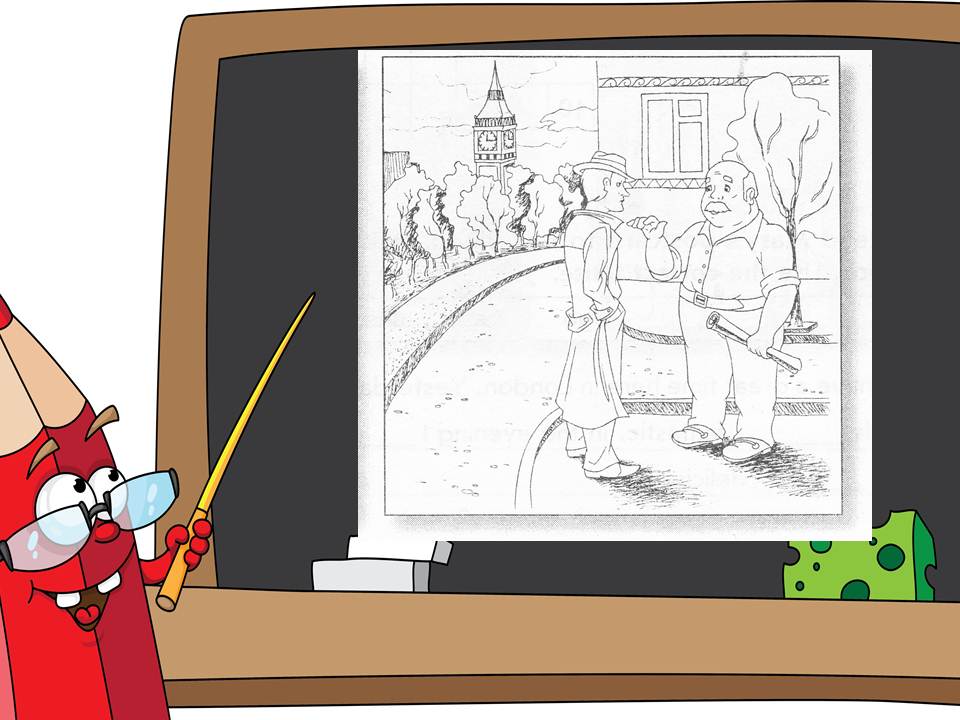

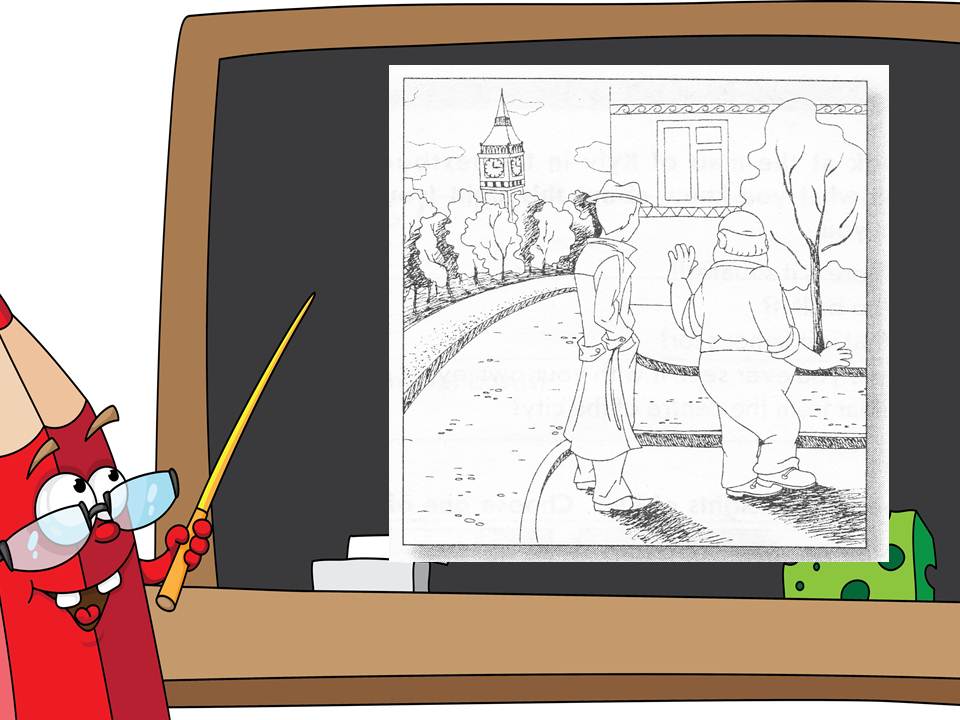

Task Stage
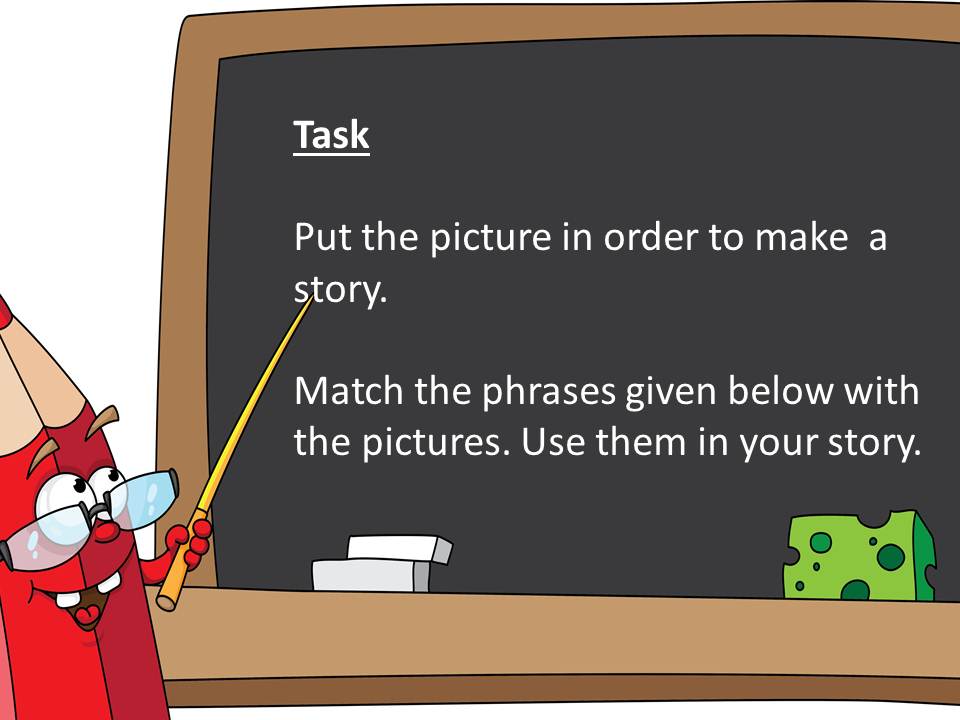

While communicating learners solve the task (ordering and matching), and then write down their stories (creative task).
Post - Task Stage
At this stage learners read their stories, teacher corrects mistakes. They all together analyse the story and useful phrases (description of a person, giving direction) that can be used in it.
After that learners come back to the story and to the dialogue between two men. Their task is to repeat this conversation once more.

 The Topic "Food. Shopping"
The Topic "Food. Shopping"
Pre - Task Stage
Learners are shown the pictures of different food products to activate their knowledge about the topic.


Task Stage


Learners are divided into some groups. Each group thinks over the task asking questions each other, making list of dishes and list of products they need. Then they must match these products to the kinds of shops where they can go shopping. After that they must share their experience of shopping: how to ask for the help, how to buy something.
Post - Task Stage
Groups represent their lists telling why they want to cook these dishes and what they need for it.
While working the class pick up all useful words and phrases that can be used in communication.
Then they come back to the task and show in dialogues how they prepare Christmas dinner in the family.
 Look at some other kinds of Tasks that can be used at the lessons.
Look at some other kinds of Tasks that can be used at the lessons.








 Some tips and recommendations as for using Task Based Learning method.
Some tips and recommendations as for using Task Based Learning method.
- turning to the real - life communication;
- usage of all language means for solving the task;
- further analysis and self-analysis of mistakes and spots in knowledge;
- can be used for all types of learners.
 The minuses (disadvantages) of the method:
The minuses (disadvantages) of the method:
- it can hardly be used for young learners at the beginning stage of learning;
- it doesn't help to develop the clear language system;
- unpredictable results;
- it doesn't co-operate with the strict scheme of Ukrainian text-books for learning English.
 The list of qualities required from the learners:
The list of qualities required from the learners:
- high motivation;
- flexibility;
- ability for the compromise;
- desire to correct own mistakes;
- tolerant co-operation;
- open mind for others thoughts;
- ability to co-operate.
 The list of qualities required from the teachers:
The list of qualities required from the teachers:
- ability to create in class the atmosphere of positive and responsible co-operation;
- ability to analyse his (her) own activity;
- ability to use this model (method) of learning;
- constant development of self - education and pedagogical qualification.
In some way, we can say that this method (Task Based Learning) can't be fully used in Ukrainian schools. Strict text-books, program requirements and time - limit influence on the way we use this method.
But anyway we can speak about applying of this method (or some its elements) into teaching English.